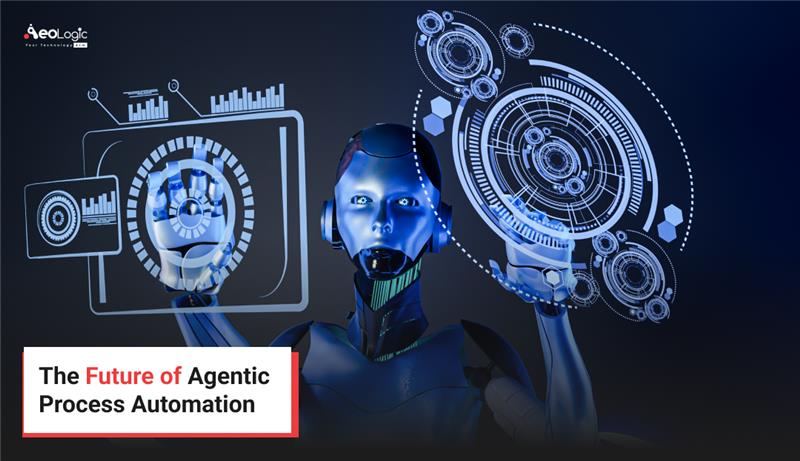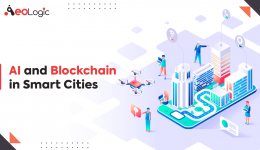In a world where businesses are increasingly reliant on automation to stay competitive, Agentic Process Automation (APA) is emerging as the next evolutionary leap beyond traditional robotic and intelligent process automation. Fueled by advances in AI workflow agents, multi-agent systems, and autonomous enterprise solutions, APA is transforming how organizations manage complex processes with minimal human intervention.
This blog explores what APA is, how it differs from legacy automation models, and what the future holds for companies ready to embrace the power of agent-based intelligent automation.
What is Agentic Process Automation?
Agentic Process Automation is a next-gen automation paradigm where intelligent software agents autonomously plan, execute, and adapt workflows in real-time. Unlike traditional Robotic Process Automation (RPA), which relies on predefined rule sets, APA utilizes autonomous AI agents capable of decision-making, reasoning, and context-aware interactions.
These AI agents don’t just automate—they think, adapt, and collaborate, mimicking the problem-solving capabilities of human workers while delivering unmatched speed and scalability.
Agentic AI vs Traditional Automation
| Feature | RPA | Intelligent Process Automation (IPA) | Agentic Process Automation (APA) |
|---|---|---|---|
| Decision-making | Rule-based | Augmented with AI | Fully autonomous |
| Adaptability | Low | Moderate | High (dynamic learning) |
| Context-awareness | None | Limited | Deep contextual understanding |
| Workflow complexity | Simple/repetitive | Semi-complex | Complex, variable, unpredictable |
| Human interaction | Required | Partial | Minimal or optional |
APA enables a shift from task automation to goal-based automation, where agents work toward outcomes instead of simply executing steps.
Key Components of Agentic Process Automation
1. Autonomous AI Agents
These are the core entities that interpret goals, gather context, and decide on the best sequence of actions. Think of them as digital employees with a mind of their own—capable of learning, prioritizing, and executing without waiting for detailed instructions.
Popular tools:
- LangChain
- AutoGPT
- CrewAI
- MetaGPT
- ReAct framework
2. Workflow Orchestration
APA involves the dynamic orchestration of multiple AI agents, each responsible for a part of the workflow. Unlike traditional static scripts, these orchestrators allow agents to communicate, delegate tasks, and react to changes in real time.
3. Memory Systems and Contextual Awareness
Agentic systems utilize long-term memory to recall past interactions, user preferences, and organizational context, enabling more nuanced and efficient decisions.
4. Human-AI Collaboration
While APA minimizes the need for human input, it still includes mechanisms for supervision, human-in-the-loop (HITL) interventions, and escalation when decisions exceed predefined risk thresholds.
Top Industry Use Cases for APA
1. Customer Service Automation
Autonomous agents can handle complex customer queries, analyze sentiment, and escalate only when necessary, dramatically reducing resolution times and improving customer satisfaction.
2. Financial Operations
From compliance audits to real-time reporting and fraud detection, APA offers secure, scalable solutions for financial automation.
3. Healthcare
APA enables intelligent scheduling, AI-based patient triage, data interpretation, and support for clinicians—accelerating workflows while maintaining compliance with healthcare standards.
4. Logistics and Supply Chain
AI agents dynamically reroute deliveries, manage inventory forecasts, and optimize supply chain flows based on real-time data and evolving business goals.
5. Software Development
Agentic tools are being used for code generation, debugging, QA testing, and even architectural planning—speeding up release cycles.
6. Sales & Marketing
APA enables personalized campaign execution, lead scoring, automated reporting, and cross-channel orchestration at scale.
Enabling Technologies Behind APA
Natural Language Processing (NLP)
Agents communicate through natural language, making them user-friendly and enabling better understanding of unstructured data.
Reinforcement Learning and Reasoning Engines
APA systems learn from results and adapt future actions for better outcomes, making workflows smarter over time.
Multi-Agent Systems
These ecosystems feature multiple AI agents collaborating on large goals, sharing knowledge, and adjusting strategies dynamically.
Agent Development Frameworks
Emerging platforms such as LangChain, CrewAI, and BabyAGI are making it easier for businesses to develop and deploy enterprise AI agents without building everything from scratch.
Benefits of Agentic Process Automation
- ✅ Autonomy at Scale: Agents operate independently, driving down the need for micromanagement.
- ✅ 24/7 Operations: No human fatigue, ensuring consistent performance across time zones.
- ✅ Operational Cost Reduction: Lower overhead with fewer manual interventions.
- ✅ Faster Time to Market: Automation accelerates product development and service delivery.
- ✅ Higher Accuracy and Compliance: Real-time audits and rules embedded into agent logic.
- ✅ Self-Improving Systems: Agents learn from past performance to enhance future outcomes.
Challenges and Risks to Consider
While APA is transformative, it’s not without risks:
- ⚠️ Data Security and Privacy: Agents with broad access to sensitive data must adhere to strict compliance.
- ⚠️ Ethical Concerns: Unsupervised decisions in critical areas (e.g., hiring, medical advice) require oversight.
- ⚠️ Overdependence on Automation: Business continuity plans must be in place for agent failure scenarios.
- ⚠️ Skill Gaps: Organizations need talent familiar with agent-based development and monitoring.
The Future Outlook for Agentic Automation
The future of APA looks promising and expansive:
- 🔮 Agentic Hyperautomation: APA will integrate with traditional hyperautomation platforms for total digital transformation.
- 🔄 Legacy System Integration: AI agents will soon be able to interface with outdated enterprise systems, extending their life and utility.
- 📈 Agent Marketplaces: Off-the-shelf domain-specific agents will be available like SaaS tools.
- ♻️ Self-Healing Workflows: Agents will auto-correct broken workflows and reroute tasks intelligently.
- 🧠 AI Co-Workers: From assisting roles to fully autonomous execution, AI agents will become colleagues, not just tools.
How to Get Started with APA in Your Enterprise
Implementing APA requires a strategic, phased approach:
- Identify high-variability processes where traditional RPA struggles.
- Audit current tech stacks for compatibility with APA frameworks.
- Run a pilot using open-source agents or agentic automation platforms.
- Train teams on agent development and prompt engineering.
- Partner with an APA consultant or vendor to scale confidently.
Choosing the Right Agentic Automation Partner
Your APA partner should offer:
- 🌐 Scalable platform support for multiple agents and complex workflows
- 🔒 Enterprise-grade security compliance
- 🔌 Integration capabilities with your CRM, ERP, and legacy systems
- 🛠️ Customization and extensibility for domain-specific agents
- 📈 Analytics and monitoring tools for agent performance and auditing
Top Agentic Automation Platforms to Explore in 2025
- OpenAI Agents
- LangChain
- Microsoft Copilot Studio
- CrewAI
- IBM Watson Orchestrate
Conclusion
Agentic Process Automation is more than just a trend—it’s a paradigm shift in how businesses leverage AI. With its ability to scale intelligently, adapt autonomously, and collaborate like human teammates, APA is the cornerstone of the AI-powered enterprise.
Organizations that start investing now in APA tools, training, and partnerships will not only gain a competitive edge—they’ll redefine what’s possible in the future of intelligent automation.
Frequently Asked Questions (FAQs)
1. What is Agentic Process Automation?
APA refers to AI-powered systems using intelligent agents to manage complex workflows autonomously.
2. How does APA differ from RPA?
Unlike rule-based bots in RPA, APA uses AI agents capable of reasoning, learning, and adapting in real-time.
3. Can APA replace humans in business processes?
Not entirely. APA reduces the need for manual intervention but still relies on humans for supervision, training, and critical decisions.
4. What tools are used to build AI agents?
Popular frameworks include LangChain, AutoGPT, MetaGPT, ReAct, and CrewAI.
5. What industries can benefit most from APA?
Finance, healthcare, logistics, customer service, and software development are leading adopters of APA.






